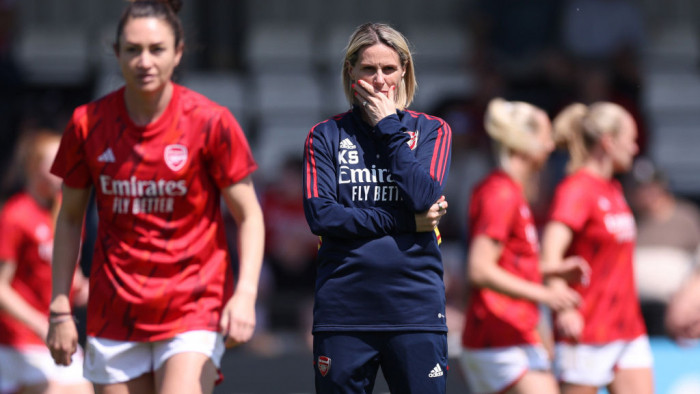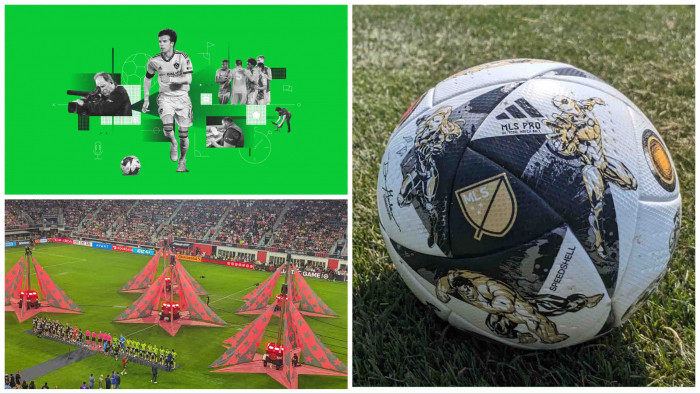We've long held aspirations of being part of a sailing club, but have realised it makes much more sense just to sit in our dingy in the hotel pool drinking Woo-woo. Here's your guide to how the less lazy do it.
Athletes: 380
Golds up for grabs: 10
Olympic presence: Men and Women Since 1900.
Olympic Format: There are ten events in 2012, four for men, four for women and two events open to all; different yacht classes are used for each. Men and women have their own events in the windsurfing, Laser and 470 class. Men alone compete in the Star class, women in the Elliott 6m class. The open events are in the Finn and 49er classes.
Contenders: At Beijing 2008 Britain was the top sailing nation with four gold medals out of eleven. In 2012 Britons will be challenging in almost every class. Other notable crews include the Dutch pair Lisa Westerhof and Lobke Berkhout, who are the women’s 470 world champions; Mat Belcher and Malcolm Page, the Australian men’s 470 world champions; and the Spaniard Blanca Manchón, a favourite for the women’s windsurfing.
Past Champions: Great Britain: 24 | USA : 19 | Norway: 17
Watch it: 28 July–11 Aug, 2012, Weymouth and Port land. Catch the BBC’s coverage of the Olympic Games across 24 dedicated channels on freesat
..........................................................................................................................................................
THE BASICS
Competition Racing
There are two forms of sailing race: match racing and fleet racing. Match racing is simple: two boats race headto- head, with competitors trying to outmanoeuvre each other and force their opponents into rule violations and penalties. Fleet racing involves more than two boats, usually many more, and generally consists of more than one race. Points are awarded according to race position (the higher the position the lower the score) and are accumulated over a series of races. The boat with the lowest total wins.
At the Olympics, after many years of varying formats, a more uniform system is now in place. The women’s Elliott 6m class will be a match race event. All other competitions begin with an opening series of fleet races (ten in all classes except the 49ers, who have to do fifteen). The vagaries of wind and current being what they are, crews are allowed to discard their worst score after five races and their two worst after nine. The top ten boats thengo into a final medal race on a shorter course. Double points are awarded for positions in this race and these are added to the opening series scores to determine the winners.
Two different types of course are used: trapezoidal and windward return. Their precise location and orientation will depend on the prevailing patterns of wind and current on race day. The trapezoidal course has a separate start and finish line and three points around which boats must turn to complete the fourleg course. The windward return course is simply a two-leg affair but orientated so that the first leg is a leeward sail against the wind (called a beat) and the second leg a sail with the wind (called a run). When boats are sailing neither with nor against the wind, the leg is called a reach.
The Law of the Sea
The rule book of international sailing is long and complex. A century of fearsome competition has produced a vastcase history of wrangles over what constitutes a right of way when two boats want to occupy the same space or path. Broadly speaking, when the boats are on opposite tacks (tacks explained below) the onus is on the port-tacking boat (lying to the left of to stay clear. When two boats on the same tack overlap or sit side to side, the boat closer to the wind must stay clear of the other boat. Sailing remains a highly self-regulated sport in which, like golf, competitors are expected to declare their mistakes and violations. If competitors think they have committed a violation they can avoid disqualification by performing a voluntary 360 turn in the water (some formats specify double turns or 720s). However, in the case of a really serious breach of the rules, boats are expected to retire. Injured parties may protest after a race to a panel of five judges, which can disqualify perpetrators.
Olympic Sailing Classes
Yachting was once all about how big a boat you could afford and how much you could spend on technology. In its survey of the 1920 Olympic competitions, Yachting World asked: ‘Are they intended to be a test of seamanship or a test of Yachts? Or both?’ While ocean-going racing retains elements of both, Olympic sailing is now focused on seamanship, as the degree of variation between boats has diminished to the point where Olympic events are raced with virtually identical equipment. At London 2012, seven different classes will be used across the ten events – a windsurfing board, two keelboats and four variants on the dinghy. Dinghies have movable centreboards that can be taken up into the boats; keelboats have fixed ones.
470 (dinghy). Crew: 2; Events: men and women; Olympic debut 1976. Designer: André Cornu (France). Exactly what it says on the tin: the light and manoeuvrable 470 is 470cm long. The two crew members are usually little and large: a lightweight skipper who steers, and a heavyweight second crew member who hangs outside the boat in a trapeze to balance it on sharp turns and in high winds.
Laser (dinghy). Crew: 1; Events: men and women; Olympic debut 1996. Designer: Bruce Kirby (Canada). Since making its Olympic debut in 1996, the laser has become the most popular one-person sailing boat in the world. Women will race the Laser Radial, which has a reduced sail area and a shorter mast, making it easier for light sailors to sail in heavy winds.
RS:X (wi ndsurfboard). Crew: 1; Events: men and women; Olympic debut 2008. Designer: Jean Bouldorres and Robert Straj. The RS:X was introduced at the 2008 Olympics, replacing the Mistral class windsurfing board. While former Olympic-class sailboard were all the classic long board shape, the RS:X is a compromise between traditional longboards and the wider formula racing boards not used at the Olympics.
Star (keelboat) Crew: 1; Events: men; Olympic debut 1932. Designer: Francis Sweisguth (USA). The Star class boats were introduced at the 1932 Los Angeles Games and have been raced at every Olympics since.
Elliott 6m (keelboat). Crew: 3; Events: women; Olympic debut 2012. Designer: Greg Elliott (New Zealand). The Elliott 6m makes its debut at London 2012, having been selected for its robustness in match racing.
49er (dinghy). Crew: 2; Events: open; Olympic debut 2000. Designer: Julian Bethwaite (Australia). The 49er is the fastest craft in the Games, but speed comes at the price of instability, so both crew members need to get outside of the craft in a double trapeze to balance it.
Finn (dinghy). Crew: 1; Events: open; Olympic debut 1952. Designer: Richard Sarby (Sweden). In 1949 Richard Sarby, a Swedish polymath who combined marine engineering with hairdressing, designed the Finn, a single-handed dinghy considered to be the purest athletic experience in sailing. Getting the best from its large sail area and heavy boom requires a lot of strength. Introduced in 1952, the Finn is basically unchanged from its original design.
Extracted from How to Watch the Olympics by David Goldblatt & Johnny Acton (Profile Books)(Image: Rex Features)
Latest
Related Reviews and Shortlists










